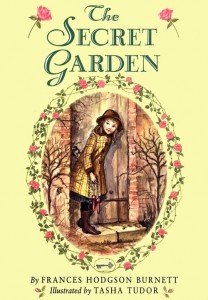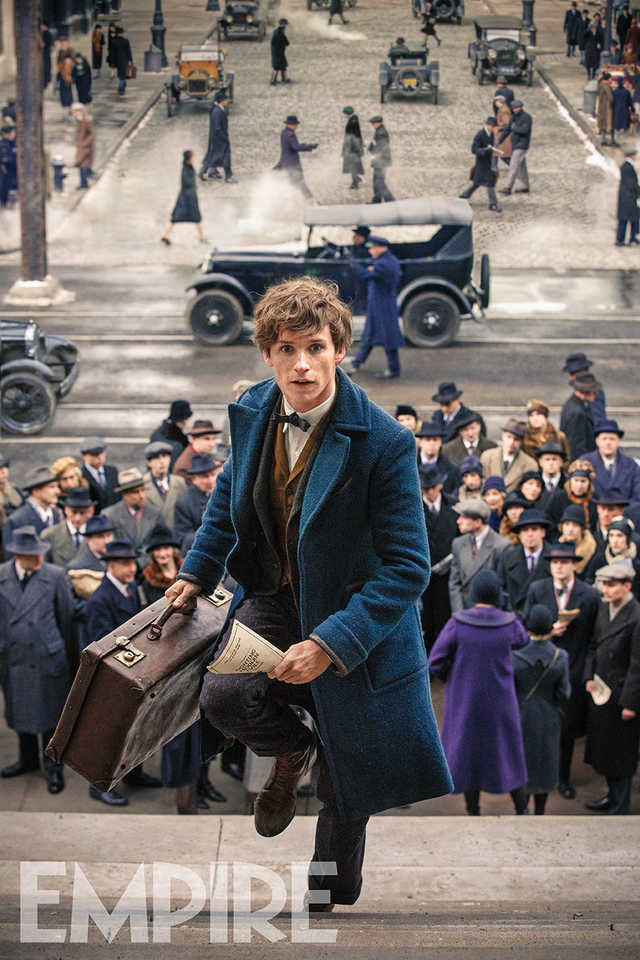Cursed Child is set to start preview performances tomorrow, and in the midst of J.K. Rowling, director John Tiffany and writer Jack Thorne preparing for their opening day, The Guardian spoke to them about their two years of collaboration on the project.
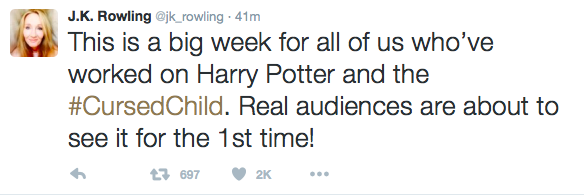
Commenting on the ‘warmth and ease’ of the relationship between the three creators, writer Sarah Crompton says that the ‘friendship and ease between them bodes well for the collaboration that has sustained them for more than two years’.
We are reminded that this is the only interview the trio will give before the opening of the play. Jo recently tweeted a photo of a badge saying ‘#KeepTheSecrets’, which is the running message of the play’s promotion. In a recent backstage glimpse of the play (which you can watch here), the door to the rehearsals room bore a sign saying ‘Keep Calm and Keep the Secrets’.
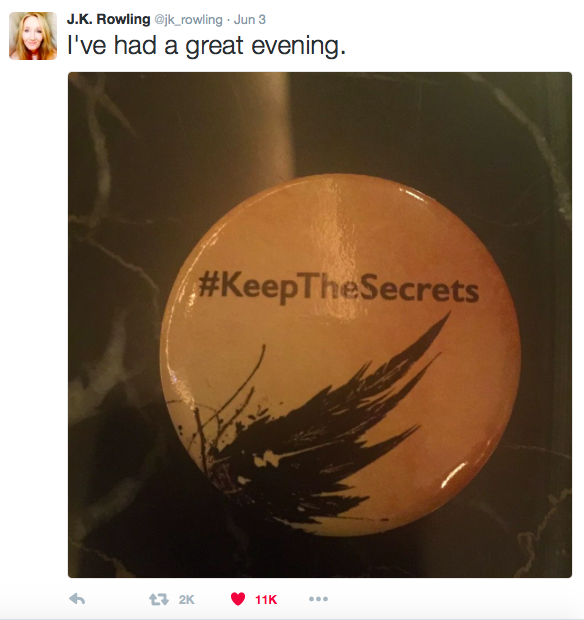
Jo also tweeted a video today, asking all seeing the preview performances and beyond to keep the secrets of the play under wraps, so not to ruin the story for those unable to see the play or those attending slightly later dates:
On keeping the secrets:
“I’ve been through this many times,” says Rowling. “And I hope we get there without any major spoilers, purely because people will have an amazing experience if they don’t know what’s coming.
“Generally speaking, Harry Potter fans are a community, they have each other’s backs, and they want to have that mystery and the sense of surprise. So we’re hopeful. But it won’t be the absolute end of the world. We’re not going to be throwing tantrums about it but we hope for the audience’s sake that we can get there.”
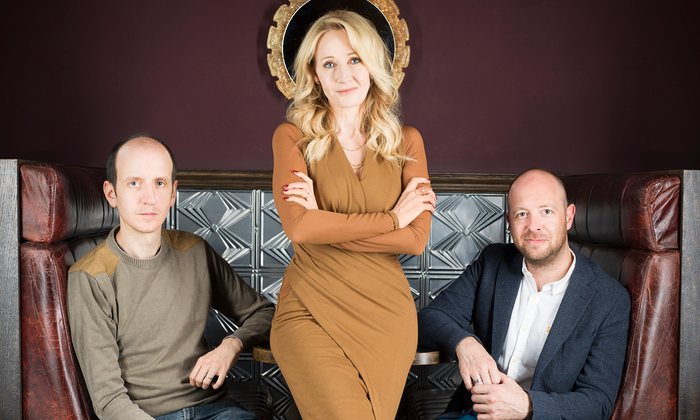
Two weeks ago, The Guardian’s Sarah Crompton met with the trio, and Rowling understandably hadn’t been sleeping much:
“I’ve been awake since 4am … We were in the theatre last night and I saw a scene that’s very close to my heart, in costume, on the set And it was quite overwhelming”
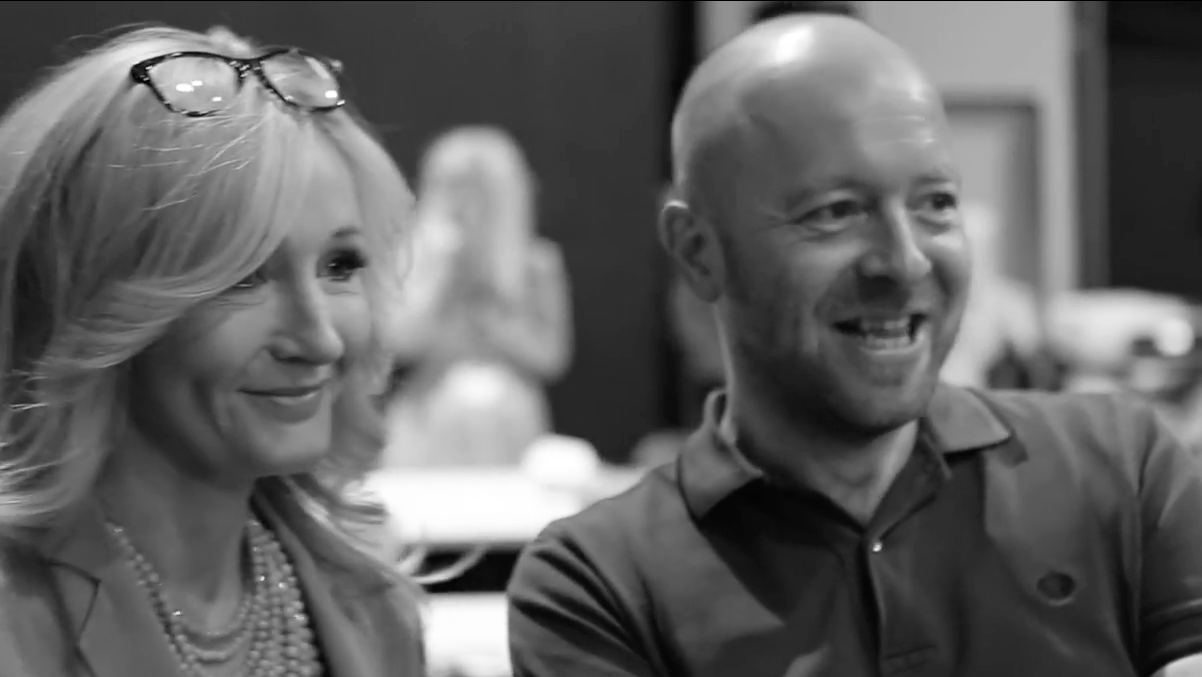
Director John Tiffany is clearly no stranger to Jo’s amazement with the play:
“Jo has been around for a lot of the process,” Tiffany chips in. “A lot,” she agrees. “But last night was the first time I had been into the theatre and seen everything so fully realised. And it was… extraordinary.”
“We did a fist bump, didn’t we?” says Tiffany, smiling.
“Well, I tried to do a fist bump with you,” Rowling shoots back. “And you tried to shake it. So that wasn’t our coolest moment. But in fairness it was dark…” “And I am not known for my first bumps,” says the director. “Nor am I, really,” adds Rowling. “I just felt the moment demanded one.”
Talking about their nerves, Jo – the 4am riser – feels she could take a lot from Tiffany’s relenting composure. He says that his unshaken nerves were unexpected:
“If you had asked me a year ago how I’d be feeling today, I think I’d probably have said I would be crumbling biscuits in the corner. But I feel remarkably sane.”
“You are so calm,” Rowling interjects. “I am less calm.”
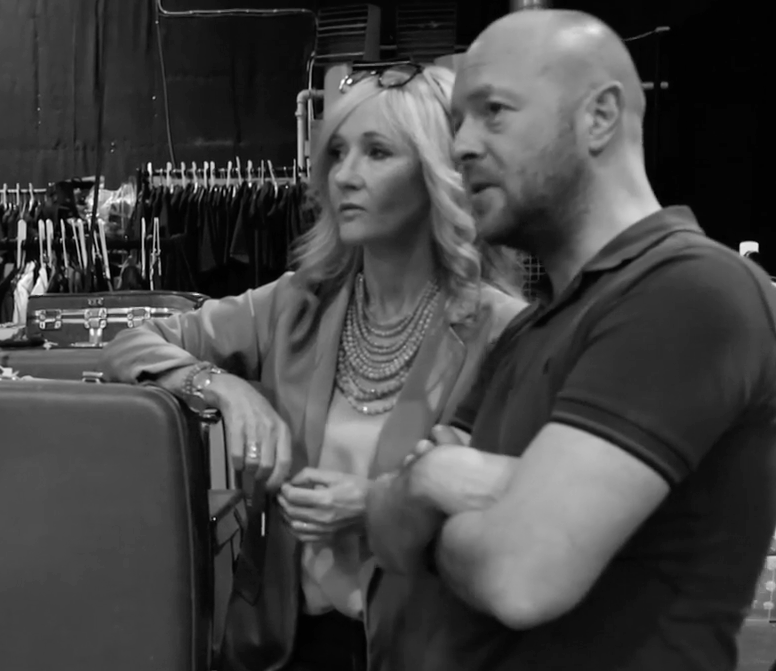
The magic started in a meeting between J.K. Rowling and the play’s now-producer, Sonia Friedman – after speculating the idea and bringing in Tiffany and Thorne, Rowling was completely on board:
“You can probably imagine I have been asked to do something else with Harry Potter five times a week ever since the series ended. Sonia just wanted to explore a theatrical production and I knew her by reputation obviously and thought I would really like to meet her and hear what she had to say.”
On Tiffany and Thorne’s involvement:
“That’s the reason this happened because I thought I will never have the opportunity to work with such great people again,”
Of course, Jack Thorne is a self-proclaimed ‘total Potterhead':
“I still consider myself a Potterhead and I hope the Potterheads don’t hate me so much after this that I am never allowed to be one again.”
Yet Tiffany was unaware of this when he invited Jack to become writer of the play:
“He asked me when we met at the tube station on the way to The South Bank Show awards,” remembers Thorne. “So glamorous,” laughs Tiffany. “And so appropriate, the tube station,” adds Rowling mysteriously. Thorne continues: “And he said, ‘What do you think about it?’ And I went a bit nuts in the street. Only because I’m so incredibly shy, nobody would have seen or realised I was going nuts.”
In an amazing turn of events, Jo Rowling and John Tiffany revealed that they actually met informally years before. Jo was a single mother, writing The Philosopher’s Stone in Edinburgh Cafes, completely unaware of the phenomenon it would become:
One of her favourite haunts was the Traverse theatre, where Tiffany was assistant director. “It was one of the first places in Edinburgh you could have a cappuccino,” remembers Tiffany. “I was there meeting actors and writers a lot, and I remember seeing a woman writing, with a pram at her side. We got to saying hello and I remember once Jo said, ‘Do you mind if I’m here…’”
“Because I hadn’t bought a lot of coffee,” she explains, before Tiffany adds: “Then a year or so later I realised who it had been. And she didn’t come to the Traverse any more.”
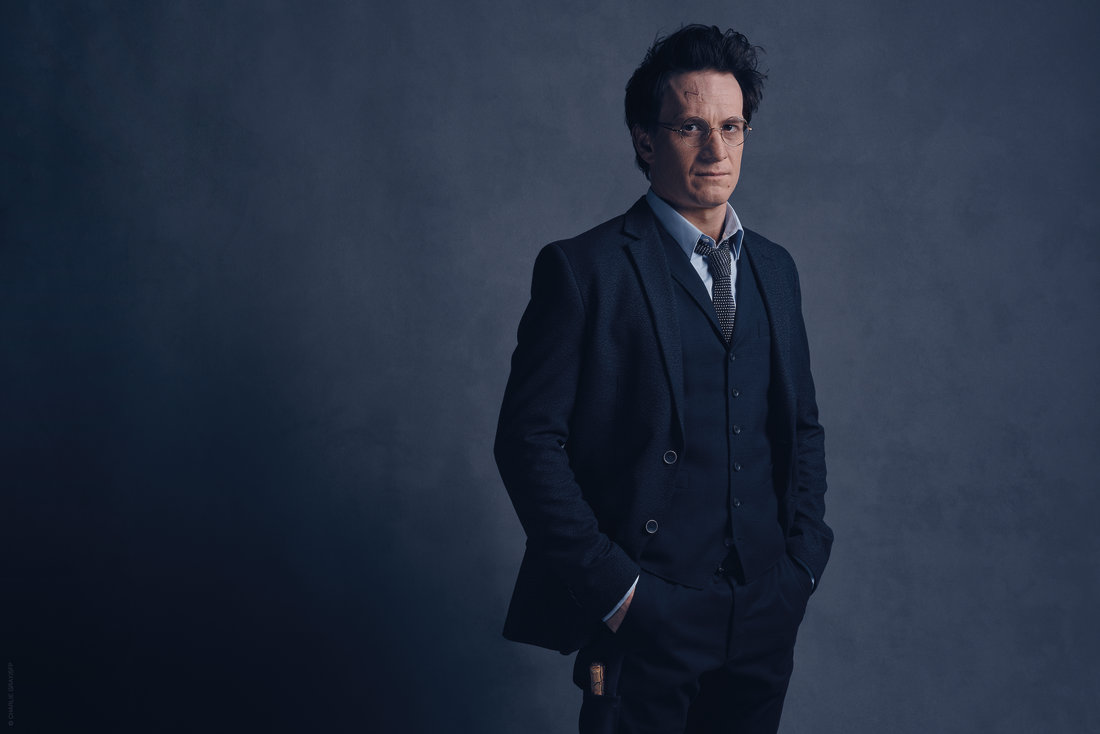
Jo says her and Jack Thorne are similar in many ways, making the bond between the three a lot easier to work with. They’re serious about the play, yet seemingly lighthearted, calm and honest in their approach to working with one another. Rowling seems to have completely entrusted her story to the two creators:
“Jack and I are similar in many ways,” says Rowling. “We’re both, notwithstanding how chirpy we are being right now, quite introverted people who are very happy alone in a room, and there are many parallels in our working practices and I felt like he was one of my tribe.”
“And we bonded over the haircut,” he adds, before asking her permission to tell the following story. “We were talking about the way people don’t realise quite how horrible age 10 is. That was the moment I realised it was possible I could never have friends. Other people would have friends and I never would. And I was talking about buying a coat: I bought the same coat as Matt Cox, who was a considerably cooler kid in the year and I had to wear it to school every day because my mum had bought it for me and it was the only coat I was going to get. He wore it a lot better and everyone thought I was copying him.”
He still shudders at the memory. Then Rowling adds, quickly: “And I had exactly the same experience. I had the same feather cut at 10 as Susan Hook. I went into school and everyone thought you are trying to be Susan Hook, you pathetic human being. We had exactly the same experience of being deeply uncool. And that’s what haunts you.”
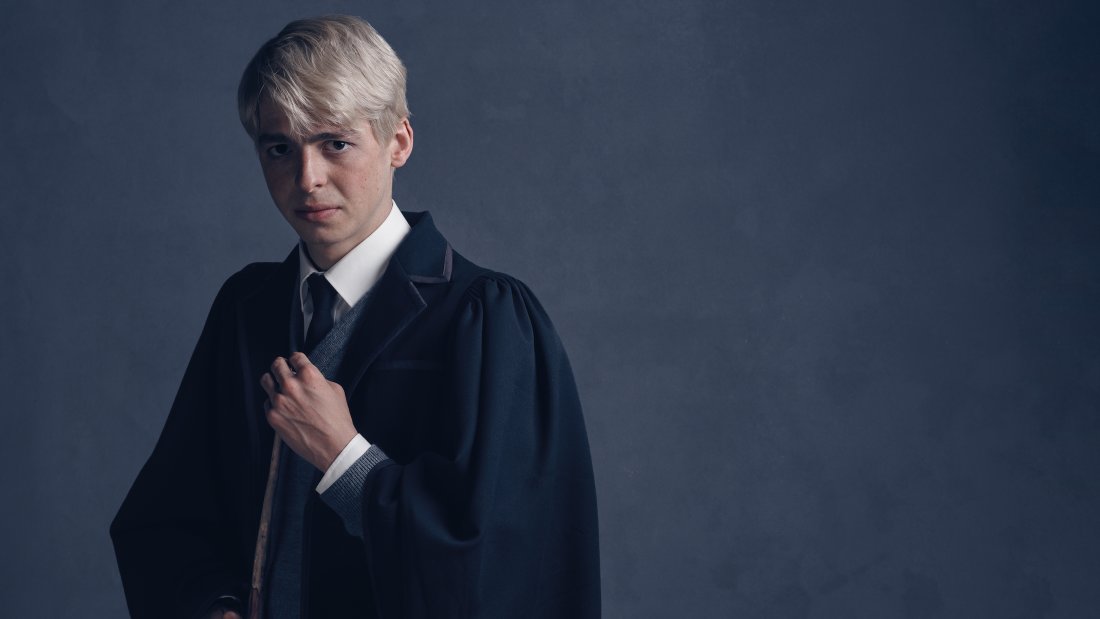
Tiffany and Thorne understand the power of stories to impact people in complex and important ways, and clearly know the role that Harry Potter has had on so many people’s lives:
“When you’re growing up it’s very easy to feel lonely and insecure,” says Tiffany. “And what Jo managed to capture, I think, was a world which made those people feel less lonely.”
Rowling explains why she took on the project, and trusted Jack with the writing:
“I never set out to build a big community, but I don’t think there is a writer alive who wouldn’t want to have that many people react to their work,” she says. “That’s what happened. People came inside the world with me.
This is why [Jack] is the right man for the job, because he just gets it. That’s pitch perfect. The big reason why people loved Potter was that it felt like it could be. That sense that there is more to the world. Just on the other side. Even within touching distance. There’s more. It is the promise of another world and it doesn’t have to be a magical world but to a lonely child or an insecure person or anyone who feels different or isolated, the idea of having a place where you do belong is everything.”
“From the moment he produced the first outline, I thought bingo, that’s it.
On whether she ever considered writing the play herself:
“I am not so arrogant that I think when you’ve got an absolutely top-class playwright offering to do it that I’m going to say, ‘Well, I’ve never done it before but I’ll do it.’ It’s a question of knowing the limits of your own competence. I was reasonably involved in the Potter scripts. I’m more familiar with that world. I felt a degree of confidence writing a screenplay but I had supreme confidence that Jack was going to write the play that I was going to love and he has. So you can’t ask fairer than that.”
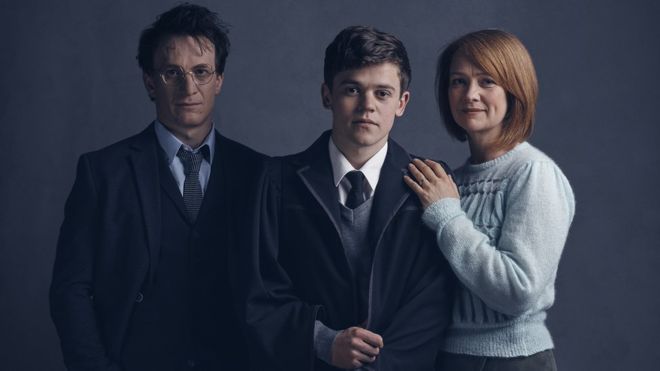
Later she comments on stage writing being a ‘revelation’ to her:
“It is a totally new language to me,” she says. “So watching Jack and what he can do on the page and his understanding on what will then translate on to stage has been such a revelation to me. I know novels and I know movies but this is a different world entirely. Jack has access to a paintbox that I don’t have because I don’t understand the medium.”
Thorne smiles. “To be honest, ever since I wrote Let the Right One In, I’d write something like, ‘They run through a forest and then are strung up on a tree and brutally murdered’. I’d just write it on a page and make John do it. And he does”
The world of Harry Potter seemed silent to us for a long time – the play has returned the magic to us all in a new form, and Fantastic Beasts is introducing us to new elements in the world of magic that we’ve not encountered before. Rowling says that the stories never left her, even whilst she worked on The Casual Vacancy and Robert Galbraith’s Cormoran Strike novels:
“It was 17 years and just because I’ve stopped on the page doesn’t mean my imagination stopped,” she says. “It’s like running a very long race. You can’t just stop dead at the finishing line. I had some material and some ideas and themes, and we three [she nods at Tiffany and Thorne] made a story.”
“But I carry that world around in my head all the time,” she acknowledges. “I am never going to hate that world. I love that world. But there are other worlds I want to live in too. To be perfectly honest, I just feel if I enjoy it, I’ll do it – and if I don’t, I won’t.”
“I always said never say never, and the reason I said that was truthfully that I did have this residue in my head in both directions – in Fantastic Beasts…, which is going back, and in this play, which is going forwards. So I still had this material in my head.
“It’s been amazing because there are roots over there and shoots over here, so it is keeping it very consistent and doing it all at the same time. We are sharing a lot between the worlds.”
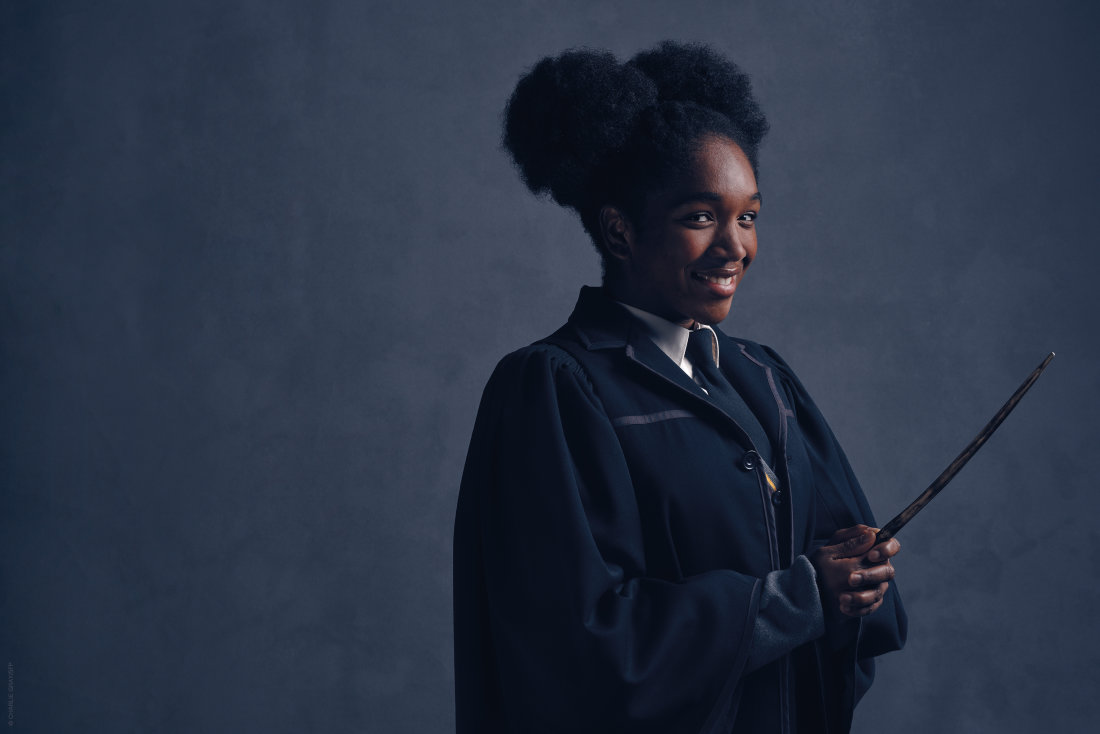
The medium chosen for Harry Potter and the Cursed Child intrigued us all – when we heard there would be an ‘eighth story’ many expected another book, some thought it would be a film – many were confused when the scriptbook was announced – it’s a method of storytelling that’s new to us all, but theatre has captured the imaginations of creators for centuries, so perhaps it is only fitting that one of the greatest stories of this century moves to the stage. Rowling explains the reasoning behind the process:
“I kept being asked whether I would make a musical and I don’t like musicals,” she says, grimacing. “Theatre, on the other hand, I love. I find it a seductive world – there is nothing like seeing an actor perform live. But I had never had anyone approach me or propose anything that excited me like this.
“I think that, as a theatrical experience, as a play, it will be unlike anything people have seen before. And once people have had this theatrical experience, they will understand why this was the perfect medium for the story.”
The play is an art form unlike any other, yet in this day and age it seems to be neglected – Rowling herself admits to never having considered its appeal before. Jack Thorne and John Tiffany are trying to bring it back with J.K. Rowling, in style:
“The phrase John hates more than any other is ‘I should go to the theatre more often’ because it contains the idea that going to the theatre is an obligation.” “Like eating your vegetables,” Rowling chips in. “Or going to church,” adds Tiffany. “And that,” continues Thorne, as if in three-part harmony, “is the death of theatre. This is an opportunity, I guess, to get people who don’t feel they should go to the theatre to go to the theatre, and then discover that they want to go to the theatre.”
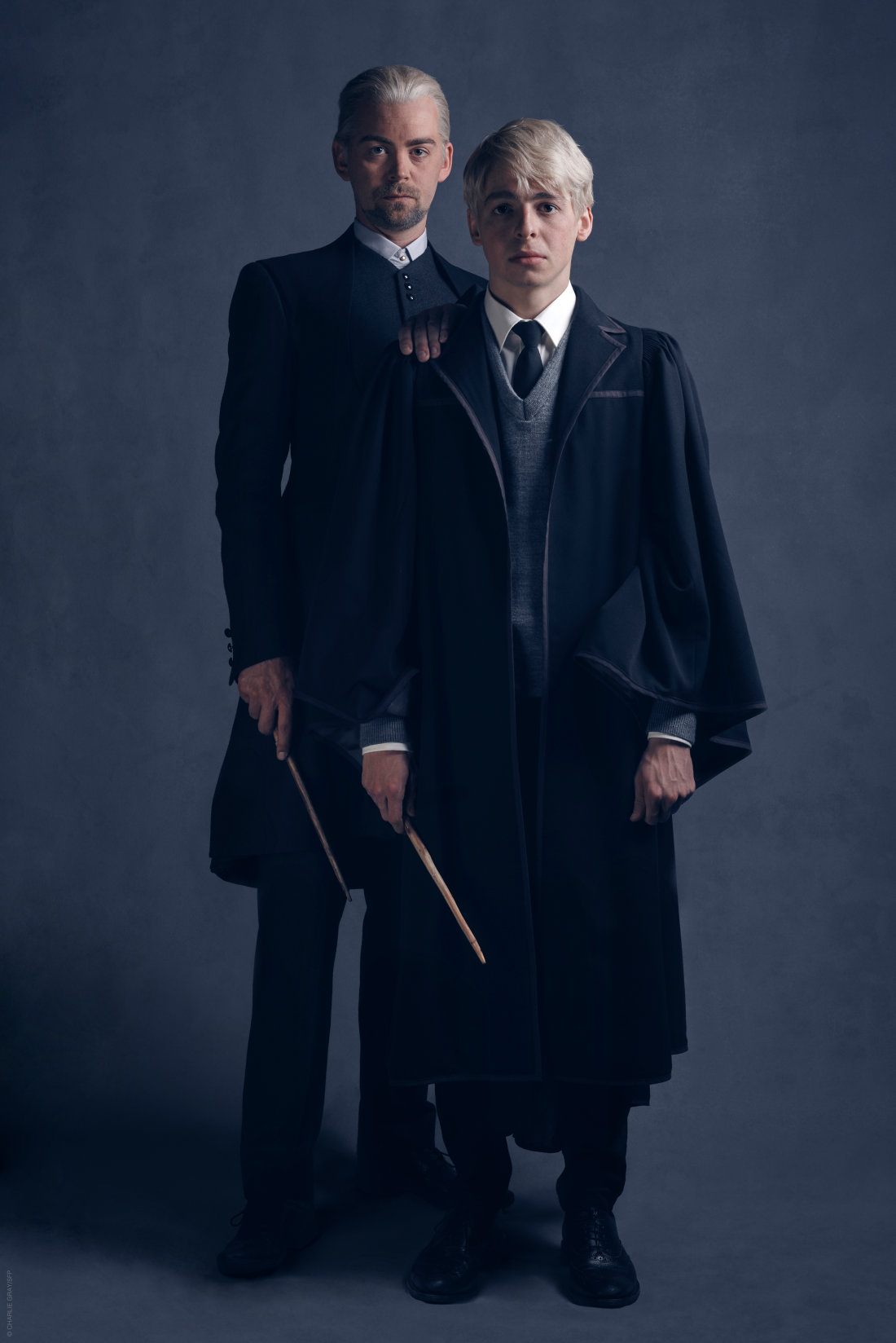
John Tiffany and Jack Thorne also unpack the reasoning behind Cursed Child being in two parts (as two separate plays):
“You would have had no space for character,” says Thorne. “It would just have been plot, plot, plot.”
Tiffany explains: ”Where film can eat up story, theatre needs space and breath. Once we thought of doing it in two parts, it felt naughty to begin with, but we felt we didn’t want to short change the story. We were very nervous up until the moment when the audience started to buy tickets, and the response was overwhelmingly fantastic, because the fear was that people would think we were just exploiting this. But it wasn’t that in any way, shape or form.” Rowling adds: “We had space to do what we were talking about doing.”
We’ve all seen the unsettling underbelly of Potter fandom rear its head in response to the casting of the Potter trio in Cursed Child – the casting of Noma Dumezweni as Hermione in particular sparked an enraged response.
Some claimed that this casting was ‘against canon’, it was against the films, it was against the book covers, it was against descriptions of Hermione (as having ‘very brown’ skin in Chapter 4 of Prisoner of Azkaban, with her infamous brown ‘bushy’ hair), it was – apparently – just wrong.
Perhaps these remarks did not come from a place of racism, or at least were not intended to come from such shallow places. Perhaps any move away from Emma Watson portraying Hermione would have been met with anger, perhaps people can’t understand that one medium of storytelling does not define another.
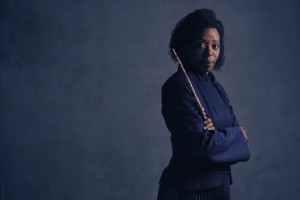
Whatever the case, J.K. Rowling commented on the response with the truth: Noma plays Hermione Granger well and – in the author’s opinion – fits the character perfectly:
“With my experience of social media, I thought that idiots were going to idiot,” she says. “But what can you say? That’s the way the world is. Noma was chosen because she was the best actress for the job. When John told me he’d cast her, I said, ‘Oh, that’s fabulous’ because I’d seen her in a workshop and she was fabulous.”
Unknown to Tiffany, when he made his casting call, there had in fact been a “black Hermione” theory around in Potterworld for years. Yet the strength of reaction surprised him. “I am not as Twitter familiar as Jo and Jack, so I hadn’t encountered its dark side, which is just awful,” he says. “The anonymity breeds horrors so after a while I stopped reading it. But what shocked me was the way people couldn’t visualise a non-white person as the hero of a story. It’s therefore brilliant that this has happened.”
Rowling settles the issue with a firm affirmation of Hermione’s state as a fictional character who can be interpreted in a variety of manners:
“I had a bunch of racists telling me that because Hermione ‘turned white’ – that is, lost colour from her face after a shock – that she must be a white woman, which I have a great deal of difficulty with. But I decided not to get too agitated about it and simply state quite firmly that Hermione can be a black woman with my absolute blessing and enthusiasm.”
The play will be ‘as purely as theatrical as possible’, according to Tiffany:
“Not a bombastic spectacle that makes people sit back,” he says. “It’s hopefully something that pulls you in. It is absurdly ambitious theatrically but it’s also about the audience and the imagination, which is exactly what a novelist does as well.”
Read the full Guardian interview here!
Harry Potter and the Cursed Child Parts 1 and 2 start previewing tomorrow, June 7th, with the official opening of the play taking place on July 30th (alongside the release of the Cursed Child special rehearsal edition scriptbook). Forty low-cost tickets for performances will be released each week every Friday at 1pm – find out more at the play’s website here!
Furthermore, if you’re interested in attending Cursed Child Midnight book release parties on July 30th, find out more about GeekyCon’s exclusive event in Orlando here, and Barnes & Noble’s nationwide events here!
We recently reported on Total Film including Fantastic Beasts as part of the 10 coolest movies coming your way, and after the magazine’s release on Friday, we can finally see the updates they had in store for us!

An interview with David Heyman (Producer) discusses working on Fantastic Beasts, and how J.K. Rowling provided a grounding to keep the films up to standards. 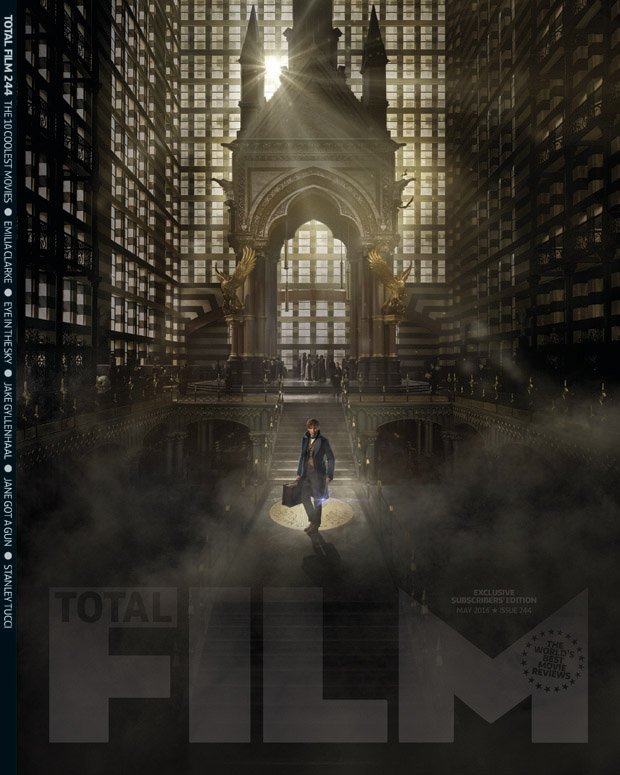
By writing the scripts and supervising on set, Jo has had a lot more involvement than the Potter films (for which she was also a Producer), setting the tone perfectly:
“Fantastic Beasts is very much in the spirit of the Potter books but it’s not filled with young children and their issues. I wouldn’t say it’s ‘dark’ but, as with all of Jo [Rowling]’s work, it’s not soft. There is material in all of the books that has a truth about life. Here, there’s darkness within. But there are also these creatures, and an awful lot of humour and heart – which I think will appeal to young and old alike.”
“Jo was on set and has been an incredible support to us. We’d run concepts by her, she’d give her thoughts and we’d adjust accordingly. She certainly was aware of all the lead casting choices before we finalised them.”
On Eddie Redmayne as Newt Scamander:
“Newt is someone who communicates better with his creatures than he does with people. He’s a Brit who finds himself in the US, and the [A]merican magical universe is different [from] the British one. Eddie was our first choice. He is very good at playing characters that are out of step, as it were, and bringing to them a real heart and compassion. He has a desire to bring truth to every moment. He’s very charming and appealing to men and women alike. And he’s a timeless actor, so he fits perfectly into 1920s New York.”
Heymen discusses the ‘beasts’ in the film, and the use of CGI rather than animatronics as used in the Potter films and seen at the Warner Bros. Studio Tour. He assures us, however, that this will not impact the final result!:
“We’ve done a lot of research on movement and look because we wanted to make our creatures grounded. They should seem like they really could exist, so they’re not just pure fantasy.”
Thanks to Mugglenet and Wizards And What Not for the heads up!
Producer David Heyman received his just recognition at the Producers Guild Awards over the weekend. Gary Oldman presented him with the David O. Selznick Achievement Award, saying, “I’ve never seen him settle for second-best,” according to Deadline‘s account of the event. Director Alfonso Cuaron called the award “very well deserved,” and Heyman accepted humbly, “This is an extraordinary honor, all the more so because it’s given to me by my peers and the PGA who really understand what it is I do and what a crazy calling we have as producers….it’s the greatest job in the world. I wouldn’t change it for the world.” PGA released a video of David Heyman’s acceptance speech on YouTube, and can be seen below:
But how did Heyman find Harry Potter and the Philosopher’s Stone before most people had even heard of J.K. Rowling? In an extensive interview for Produced By, the bi-monthly publication of the Producers Guild of America, Heyman answered this and more questions about his impressive career in film-making– revealing the true story of how the beloved Harry Potter films began– and his amazing orchestration of it all.
After being laid off from work with a major studio, Heyman opened a small office in London and decided to focus on books being published in Britain. Heyman told Produced By,
“I set out to be a bridge between the U.S. and U.K. and decided to make books a central part of my business. One, I’m a voracious reader. Two, books had probably the best ratio of development to film at the time. At the time, the British books weren’t so aggressively pursued, so I thought I could distinguish myself.”
According to David Heyman, Harry Potter and the Philosopher’s Stone was almost missed by his London office. Talking about how it all started Heyman said:
‘We had three shelves for incoming manuscripts and screenplays: priority, medium priority and low priority. Tanya Seghatchian, my very bright development executive, read an article in a trade publication about a book that hadn’t yet been published. She called the agent. The book came in and sat firmly on the low priority shelf for a couple of weeks before Nisha, my secretary, who only read material from that bottom shelf, took it home. At our Monday morning I asked, “Anybody read anything good?” And Nisha replied, “Yeah, I read Harry Potter and the Philosopher’s Stone.” I said, “Hmm, not sure about that title. What’s it about?” “It’s about a young boy who goes to wizard school,” she replied. My interest was piqued.‘
With that, the Harry Potter film producer became one of J.K. Rowling’s first true fans. Heyman described his experience to Produced By, saying:
‘I couldn’t put it down and there began my Potter odyssey… I thought if I was lucky, it might be my Chitty Chitty Bang Bang. I had no idea that it would become what it became. What I did know was that I connected with it. It made me laugh. It moved me. I related to Harry and the characters at Hogwarts. We all, in our own way, feel like outsiders. And no matter who we are, no matter how successful, no matter how happily married we are or what good friends we have, there are times where we feel alone. At least I do. And I felt that story was something that people could connect with. It was about something: being true to yourself. It was about loyalty and friendship and fighting prejudice and so much more.‘
After Warner optioned the film, screenwriter Steve Kloves and author J.K. Rowling really hit it off, thanks to Heyman’s introduction. Heyman talked of how the two writers bonded, saying:
‘As Kloves was writing the films, the books became wildly successful. All of a sudden they were No. 1, No. 2 and No. 3 on the New York Times bestseller list. Now there’s all this pressure as he’s trying to finish the script. At the same time, Jo, who had written the first two or three novels essentially without any expectations, now had all this expectation. And she was struggling as she had written herself into a little bit of a hole on Goblet of Fire but had a firm publication date! They really bonded through that shared experience and challenges.‘
Once director Chris Columbus joined the project, production designer Stuart Craig was the film’s first hire. Then, the team scoured Britain for young actors to play the three leading roles. They felt confident in their choices for Ron and Hermione but opened the search to the U.S. and Australia before finding just the right person to play Harry. Heyman told the legendary casting story to Produced by, saying:
‘One evening, Kloves and I went to the theater and seated in the audience, I noticed this boy with big round blue eyes. He seemed an old soul in a young body. And then this voice called, “David, great to see you.” Sitting next to the boy was his father, an agent I knew called Alan Radcliffe. The play started but I paid little attention to what was going on up on stage. I kept on turning around and looking at this boy. When the play finished, I went to find Alan and his son, but they’d gone. So the following morning I called ICM and asked if Alan would allow Daniel to visit the studio to meet Chris. Alan said, “Why don’t you meet him first, and then we can decide.” So Dan, his mum and I went out for a cup of tea and we spent two hours chatting. Dan had this incredible energy. He was so curious and intelligent—a curiosity and intelligence that have helped make him the actor he is today.‘
The team had a list of accomplished adult actors that they wanted, and they all accepted because the children in their lives loved the books. The Wizarding World was established. David Heyman remembered how it all unfolded, saying:
‘We made the first two [Harry Potter films] back-to-back, we were prepping the second as we were posting the first. Chris did a brilliant job. I wouldn’t be sitting here today having a conversation with you [at Produced By] were it not for Chris. He cast our three leads and so many others, chose Stuart and many of our department heads and helped create the film world and an atmosphere and culture in front of and behind the camera that lasted till the end. And he directed two beautiful films.‘
But that was just the beginning. David Heyman then explains how director Alfonso Cuaron and others joined the franchise that became a family. The focus, however; was always J.K. Rowling’s storytelling. David Heyman talked of the consistency of J.K. Rowling’s voice shining through each film despite differing directors:
‘One of the things I’m proudest of in the Potter series is that in each film a director’s vision shines through. Jo Rowling’s voice is front and center, clearly, but each director channeled that voice and has made their films their own. Without that voice, a film is a blancmange and I am not a fan of blancmanges. A director with a vision is essential, even, or maybe especially within a franchise. Having said that, we never approached Harry Potter as a franchise. We were simply trying to make each film the best it could be!‘
This only skims the surface of the story. To read more about the birth of the Harry Potter films and to learn about other great projects David Heyman has done, see the cover story for the December/January Produced By, here.
Note: I had the pleasure of reading Kaza’s first book, Erec Rex: The Dragon’s Eye, which was a great deal of fun. Fast-paced, lots of action and fantastic elements, and so much humor woven into the story and into the world. And now, without further ado, my interview with Kaza. If you have any questions or comments for Kaza, just post a comment here:
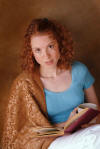 I’d like to thank you, Chris, for hosting me on your blog! It’s a pleasure to meet you, as well. You had some great questions.
I’d like to thank you, Chris, for hosting me on your blog! It’s a pleasure to meet you, as well. You had some great questions.
Congratulations on your new babies! Below I included a picture of me as a kid for your post. Readers can watch me grow older throughout the blog tour!
Which came first, the characters or the world they live in?
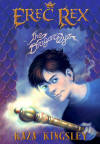
Before I wrote a word of Book One, I plotted the series for months. Some of the characters were invented right along with their world. The story is loosely based on the Hercules legend – which is set up in Dragon’s Eye and really becomes apparent more in Book Two, Monsters of Otherness. Erec’s name is similar to HERACule, Greek for Hercules.
Who Erec is, who his siblings and his adoptive mother are, and who Bethany is, are crucial to the story. They were very early part in its creation. But with that, at the same time, the world(s) in which they live were just as important, and had to be created alongside, fitting in with the characters.
Do you have a definite plan for Erec’s story?
Very much so. I know exactly where the series is going, how it ends, and what basically happens in each book. I find this necessary, so I can drop hints in early books for things that will happen later.
I will tell you that some of the structure of the series is based on the Hercules legend. Hercules had to do twelve labors – Erec twelve quests. He gets into these in Monsters of Otherness. So part of what will happen in future books is based on these quests.
Of course there are a lot of other things going on as well. Erec (and the reader) learns key things at certain points. I also had fun doing some other structuring. For example: the first contest in Book One is “The MONSTER.” The next book is “Monsters of Otherness.” Contest two was about figuring out the truth. The following book is called “The Search for Truth.” As you can guess, I have ideas about the following book titles…!
Have you had that plan from the beginning?
Mostly. There are actually some things I have changed as I went along. The most important things have stayed the same. But I’ll sometimes get a great idea, then I’ll get into my notebook and rewrite a lot of plot. I think, for me, writing is a process of constant plotting. There are always smaller bits to plot out when the big chunks are done. And I’m always coming up with new ideas to fit in.
How much has changed from concept to publishing?
Lots of unimportant things have changed. My first draft of Dragon’s Eye was over 500 pages long. It was cut down – and is better for it. But the essential, important part is the same.
Which character do you identify most with?
In the very beginning it was Bethany, as she is a girl and was drawn slightly from myself. But then, somewhere along the way, it changed. After spending so much time in Erec’s head I definitely identify more with him, now.
How did you get the idea for “cloudy thoughts”?
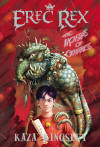
Cloudy thoughts, to me, would be horrifying to have to deal with. Having some unknown force swoop in and make you do whatever you are told, even when you don’t know why you are doing it would be awful. Erec is afraid his cloudy thoughts may turn on him and make him do something terrible some day. If they did, he wouldn’t be able to stop himself. In the beginning of Monsters of Otherness, Erec attacked his own brother because of a cloudy thought, which was very upsetting to him.
I suppose I wanted to give my main character a “gift” that was truly difficult to deal with, yet something he could learn to turn around and make work for him. As the series unfolds, watch for this to happen!
What is your most valuable tip for promoting a book?
I’m still learning! Most of my promotional events have involved traveling, for signings, school visits, and TV and radio interviews (some of the TV ones are posted on the media page of my website at http://www.erecrex.com.) This blog tour is new for me, and it’s awfully nice to do an event from home – especially when I’m writing as well!
I guess my only real tip is keep believing in yourself and never give up. Getting out there is work – but you can make it fun. It’s really just meeting people – and I love that!
How did you feel about math when you growing up?
I wasn’t quite like Bethany in that regard – lol. I was all right at math, not great. I got moved into the advanced class to do algebra in eighth grade, but I didn’t do so well. So I repeated it in ninth grade and got an A.

But I must have some fascination with math, on some level. When I was in third grade I made up an entirely useless form of math that I liked to teach my friends when we played school. And the first story that I wrote (that I can remember) when I was little involved an octopus that made people do math. I still am fascinated by math geniuses, and loved that movie “Pi.” Go figure . . .
Your references to junk food and healthy food in the book were notable. What is your position on the issue of kids and junk food?
Funny – I don’t tend to think of it as “kids and junk food” as much as “people and junk food.” Our nation’s diet is so horrible (I know, no news here.) I am into the “raw food” thing myself, as much as possible – of course I still eat pizzas, meat and deserts when I feel like it. But I’m aware of how bad most of what we eat is. I think some of that concept sneaks out into my writing.
How much do your stories change between concept or outline stage and complete draft?
The main points don’t change much, and the story line stays pretty intact. But the development between my notes on plot and the actual rough draft is tremendous. That’s where the meat of the story gets formed.
I feel like the outline points, the plot points that I know will happen, are like guideposts for me. I know I am going from point A to B to C, etc. But how will I get there? There is so much left to work out, even page by page, it’s incredible. It feels like writing fiction is one constant decision after the next. How will he get somewhere? What does she say? What time of day is it? Planning the plot / outlining is just a rough start.
I usually don’t end up deviating too much from the basic outline, though, since each book is part of a global series which all fits together as a whole. I have some room to make changes, but it has to be cohesive, too. The books also have a few subtle patterns that I try to stick to as well.











